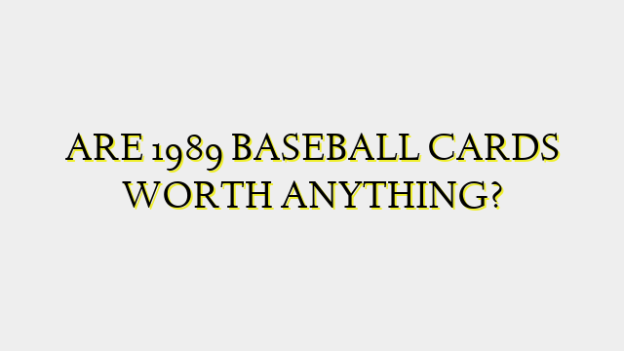The 1989 baseball card season produced some very notable rookie cards and featured players that still have value today over 30 years later. The following is an in-depth look at the 1989 baseball card market and whether these cards are worth collecting or could hold monetary value.
One of the top cards from the 1989 sets is the Ken Griffey Jr. rookie card. Griffey went on to have a legendary Hall of Fame career and is still considered one of the greatest outfielders of all time. Even decades after their release, Griffey’s 1989 rookie cards in near-mint to mint condition can still fetch high prices. His flagship rookie from the Upper Deck set regularly sells for $100-200 raw and $500-1,000 graded gem mint by PSA or BGS. The 1989 Score Griffey rookie in top shape could sell for $50-150. High grade copies of his rookie in the 1989 Donruss, Fleer and Topps sets also command $50-100 each.
Another prized rookie card is Greg Maddux’s debut from 1989 Fleer. Maddux had a remarkably consistent Hall of Fame pitching career that spanned into the 2000s. His Fleer rookie card still does very well in the market with near-mint to mint copies selling for $50-150 raw or $200-500 graded. Rookie cards for sluggers like Frank Thomas, Jeff Bagwell, and Tom Glavine from 1989 also routinely sell for $20-100 raw depending on condition, with higher prices achieved for pristine graded copies.
Beyond rookie cards, the 1989 sets featured many baseball legends entering their primes like Barry Bonds, Cal Ripken Jr., Ozzie Smith, and Nolan Ryan. Bonds’ cards from this era before steroids could fetch $5-20 each in average condition. Ripken and Smith typically sell for $3-15 based on player and set. Top vintage Hall of Famers like Ryan still attract interest too with some of his 1989 cards earning $5-25 each. Star pitchers of the day like Roger Clemens and Dwight Gooden tend to sell in the $3-15 range as well. For the true “chase” cards, rare error or one-of-one printing variations have been known to attract bids up to hundreds or even thousands of dollars from avid collectors.
When considering values, the overall condition and scarcity of a particular card makes a big difference. Near-mint to mint copies authenticated by a reputable company like PSA or BGS are worth exponentially more than well-worn cards. Also, flagship sets like Topps, Donruss and Upper Deck are more desired than lesser known brands. Variations in uniform, photo or statistical information on specific cards can impact their worth too. The rarer the card is in pristine condition, the greater its perceived collectible and resale value will be long-term in the hobby.
An important influence on pricing is the overall market for vintage sports cards. Interest fluctuates with popularity cycles and economic conditions. During boom periods, even mid-range cardboard from 1989 can appreciate several times over in a short span. Conversely, downturns could temporarily depress values across the board. Overall the vintage market has seen steady long-term growth as collectors and investors recognize cards as tangible assets holding nostalgia and speculation appeal.
To determine if 1989 baseball cards are worth keeping, consider getting valuable flagship rookies and stars graded to validate quality. Anything earning an 8.5 (gem mint) or above grades very well. Even mid-level commons from the era in high grade have real resale potential as complete set builders look to finish their collections. Lower rung cards may only net a few dollars each but could still hold a desirable collectible charm retaining memories of that specific season. For active traders, condition is key as a steady supply of gems provides opportunities to flip for profit, especially around highly anticipated rookie crop anniversaries like the 30th for the class of 1989.
While the overflow of 1980s production means not every 1989 cardboard holds value today, the right rookies, stars and rare editions from that year most certainly do retain long-term worth as coveted pieces of baseball memorabilia history. With careful collecting focusing on quality over quantity, these vintage cards offer opportunities for sound financial investment alongside enjoyment of the nostalgia they evoke. Going forward, as the next generation of fans grows increasingly distant in time from that ’89 season, demand seems poised to remain strong and prices appear headed only in one direction for key names and issues that continue to captivate collectors’ imagination and capture a special place in the sport’s storied past.




